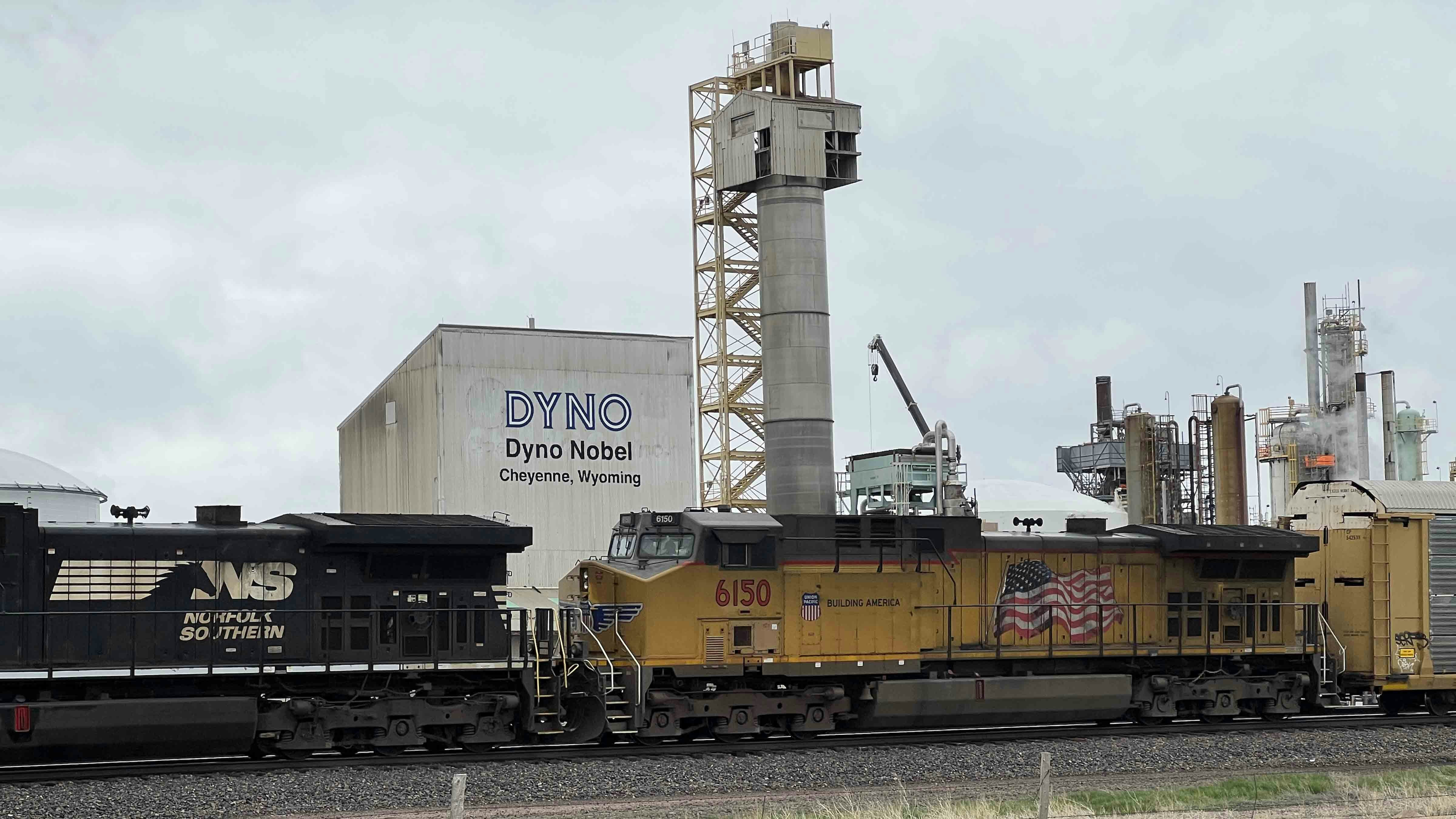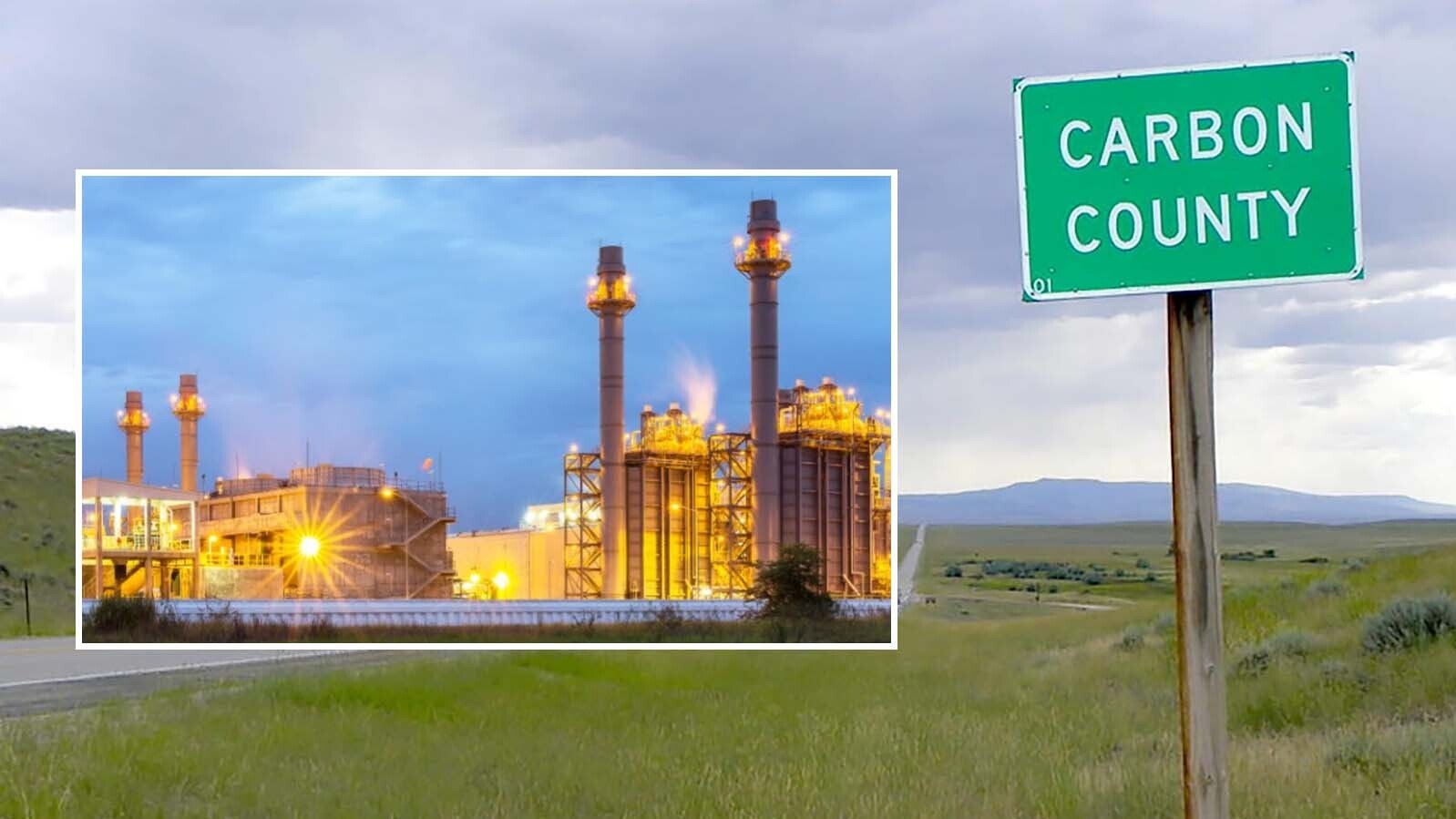It’s been more than 16 months since 30 tons of ammonium nitrate, a chemical used in explosives in Wyoming coal mines, left Cheyenne’s Dyno Nobel factory on the western edge of the city April 12, 2023, and disappeared a few days later in the desert of central California.
On Wednesday, the Federal Railroad Administration (FRA) told Cowboy State Daily that an investigation into the circumstances of the missing chemical remains “open and ongoing.”
In early July, Cowboy State Daily visited the site in Saltdale, California in the middle of the Mojave Desert to get a firsthand look at the location where it was first discovered the chemical was missing.
At the time of the visit, Dyno Nobel was storing 10 hopper cars behind barbed-wire fencing with a padlocked gate to keep people away. A Dyno Nobel employee permitted Cowboy State Daily into the train yard.
A Dyno Nobel spokeswoman later described the rail spur area as a “transload facility,” where ammonium nitrate is transferred to a truck for delivery. Several quarry and other mining operations are located in the Mojave.
Ammonium nitrate is primarily used as a fertilizer, but it also was a key chemical used in the bomb that terrorist Timothy McVeigh built to blow up a federal building in Oklahoma City in 1995.
Case Not Closed
On Wednesday, the FRA, which regulates railroad safety throughout the United States, told Cowboy State Daily that the agency’s investigation into the 30 tons of ammonium nitrate is far from closed.
“Any enforcement action that may take place is still being finalized,” the FRA said in a statement to Cowboy State Daily.
Saltdale has become a topic of interest with the Dyno Nobel investigation because a railcar carrying 30 tons of ammonium nitrate left Cheyenne’s Dyno Nobel factory and arrived in California with the chemical missing from the rail car.
A Dyno Nobel spokeswoman said in a statement to Cowboy State Daily that changes have made made to “locking mechanisms” on rail cars to eliminate future problems.
"We conducted an exhaustive investigation and subsequent review of this matter and determined that a rail car gate opened slightly during transit after the car was impacted by other rail cars,” the spokeswoman said. “We identified the few cars in our fleet with similar gate locking mechanisms and eliminated them from further use.”
She said the changes reflect efforts to keep the communities safe in which Dyno Nobel operates.
"Learnings from our reviews have informed our procedures so we can continue our commitment to zero harm to the environment and the communities in which we operate,” she said.
While in Saltdale in July, Cowboy State Daily observed hoppers filled with ammonium nitrate at the rail spur.
A label on the side of each of the hopper cars had the hazardous material placard of “UN 2067,” the identifier for ammonium nitrate.
The railcars sitting in Saltdale indicated that their hulls could hold 5,191 cubic feet, or up to three times the 30 tons missing from the Cheyenne shipment last year.
Still Missing
The loss of the fertilizer is concerning to federal law enforcement authorities.
At mines such as those in Wyoming’s energy-rich Powder River Basin and other industrial sites located near Saltdale, the ammonium nitrate is mixed with other chemicals, such as diesel fuel, and then blasting caps are used to make it explode.
In the statement to Cowboy State Daily, the FRA wrote that the incident investigation was classified as a “non-accident release” and determined that a faulty bottom outlet on a covered hopper car caused the “unintentional release” of ammonium nitrate fertilizer pellets, also known as prills.
The FRA defines a non-accident release as a an “unintentional release of a hazardous material while in transportation, including loading and unloading while in railroad possession, that is not caused by a derailment, collision or other rail-related accident,” said FRA spokesman Warren Flatau, in an email statement.
These non-accident releases consist of leaks, splashes and other releases from improperly secured or defective valves, fittings and tank shells, and also include venting of non-atmospheric gases from safety relief devices, Flatau said.
In the case of the Dyno Nobel cargo, after arriving at the Mojave facility, employees discovered that one of the three compartments of the hopper car was empty, FRA explained in the statement.
“Dyno Nobel estimated that approximately 60,000 pounds (30 tons) of material had been lost and that the release occurred while the car was in transit,” the FRA stated.
FRA said that the travel distance between Cheyenne and Saltdale is about “1,500 rail route miles,” though driving by car is 1,084 miles.
The FRA, which took two months to respond with its statement Wednesday, explained that the discrepancy in railroad versus highway miles relates to the different routes that trucks and vehicles travel versus trains between Wyoming and California.
Pat Maio can be reached at pat@cowboystatedaily.com.





